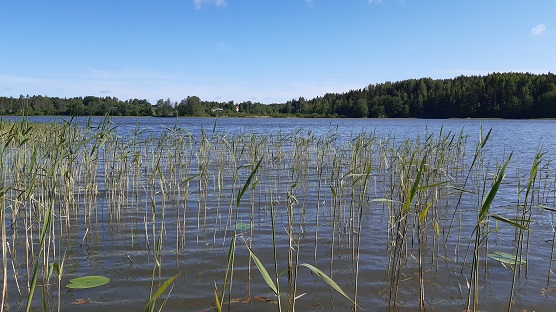Background
Eutrophication of lakes results from excessive increase in nutrient concentrations, often phosphorus. Eutrophication weakens the ecological status of lakes, threatens lake habitat types and species, and also reduces the recreational value of lakes. In the long term, measures aimed at reducing external loading are essential to combat eutrophication, as they reduce the amount of phosphorus that accumulates in the lakes. In most of the eutrophied lakes, however, measures are also needed to reduce the internal loading, i.e., the release of nutrients from the sediment.
Many lake restoration methods aimed at combating internal loading aim to prevent the release of phosphorus from the sediment. However, internal loading is a natural cleaning process of lakes. Hence, its prevention often does not produce long-term results in reducing nutrient concentrations. Instead, methods aimed at removing nutrients could offer a solution in the longer term. Closed-circuit hypolimnetic withdrawal is an innovative method suitable for stratifying lakes. The method exploits the internal phosphorus loading and aims to remove nutrients in the hypolimnetic water during stratification. The method has been piloted with promising results on Lake Kymijärvi, SE Finland since 2018. Recovering nutrients: Feasibility of closed-circuit hypolimnetic withdrawal (RaPo) -project further develops the method piloted on Lake Kymijärvi.
Objectives and outputs
The aim of RaPo -project is to develop the cost-effectiveness of the closed-circuit hypolimnetic withdrawal method by piloting and monitoring the impacts at a new lake site (Lake Linkullasjön, southern Finland). As a result, the project will provide new information on the applicability of closed-circuit hypolimnetic withdrawal as a more commonly used restoration method for stratifying lakes.
Background investigations regarding water and sediment quality on the target lake will be carried out during the summer of 2023. Implementation of the method will be planned based on the background investigations. The pilot and monitoring of its impacts will be carried out during the summer of 2024. Based on the results gained in the project, a method guide will be produced in order to promote and expand the feasibility of closed-circuit hypolimnetic withdrawal as one of the methods for lake restoration.

RaPo project pilot site is Lake Linkullasjön in Inkoo, Southern Finland © Picture: Laura Härkönen
Additional information
Senior research scientist Laura Härkönen, Finnish Environment Institute (Syke), firstname.lastname@syke.fi
Docent Leena Nurminen, University of Helsinki, firstname.lastname@helsinki.fi